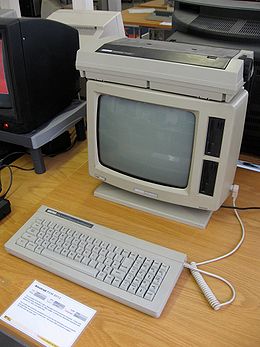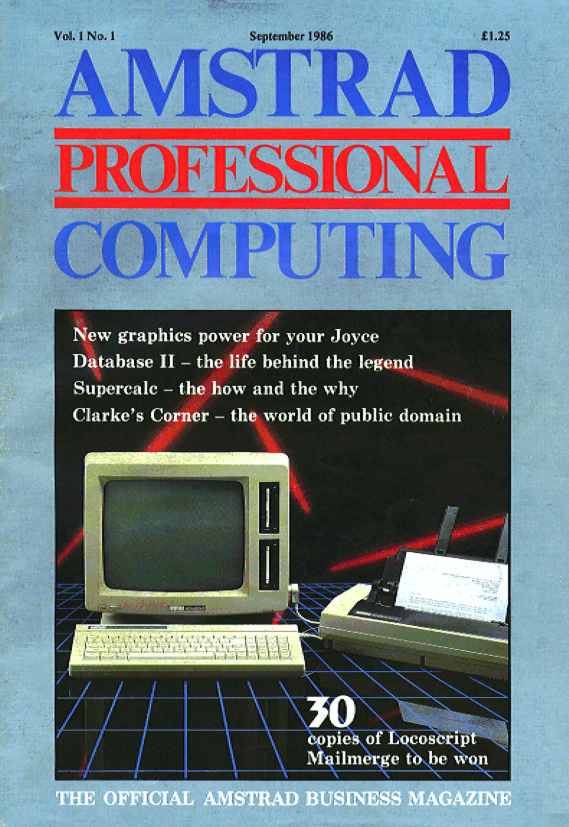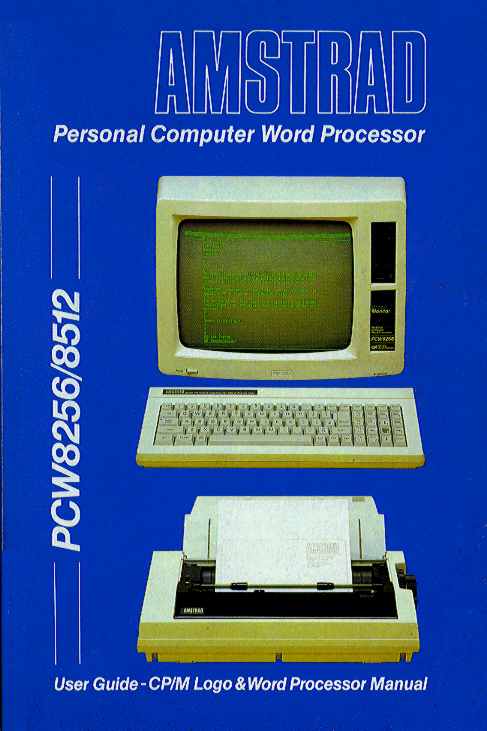| Alan Sugar's PCW - The Commodity Computer |
| Written by Historian | ||||||
Page 2 of 2
Why didn't he just give in and use a 16-bit processor any way? The answer is one of simple economics. The Z80's price had fallen to around $1 per chip as compared to $10 for an 8086. There was also the knock-on effect of using a 16-bit chip in the form of a full 16-bit architecture. The support needed for a 16-bit design would have increased the price at every step. Finally there is little advantage to be gained from using a 16-bit processor in a machine that was destined to spend most of its "on" time moving eight- bit characters from one place to another! By August of 1984 Locomotive Software and MEJ were well advanced with the design. The machine, now code-named "Joyce" after Alan Sugar' secretary was still awaiting a final name. Its design may have been superficially obsolete but it was actually very advanced. Although the Z80 could only handle 64K of memory, a total of 256K, or even 512K, could be installed and bank switching was used to access the extended physical memory. The video display was memory-mapped into one of the banks and provided a relatively high-resolution display. As the disk controllers, video logic and everything else needed were integrated into one gate array this resulted in a main board with only 11 devices plus 8 memory chips. The emptiness of the internals of the machine came as something of a shock – there really wasn't very much inside! Finally a name was decided on – the PCW 8256 standing for Personal Computer Word processor. Presumably the 8 came from the Z80 and the 256 from its memory size.
LocoScript word processorLocomotive Software had an equally big challenge in producing the word processing software which they decided to call LocoScript. The only specification they had was that it was to be aimed at the typewriter market. To try to clarify what was wanted Chris Hall drew up a list of features classified as basic, useful or advanced and sent it to Amstrad. The response was quick, all of the basic, all of the useful but none of the advanced features were to be incorporated. The resulting program was nevertheless surprisingly advanced . At the time most word processors were still working with embedded codes and What You See Is What You Get (WSYWIG) had more or less only just been invented. LocoScript wasn't quite WSYWIG but it wasn't far off. The printer driver software could make the printer perform well beyond its "dot-matrix" specification. It was a general worry that the dot-matrix printer just wouldn't be acceptable. Most word processors of the time used a daisy wheel printer, which was expensive but produced output that looked as if it had been typed on a very high quality typewriter. The dot matrix was just not up to "letter quality". What was surprising was that by reducing the printing speed Locomotive were able to increase dot density to the point where the output looked as if was "near letter" quality. However, all the fears as to acceptable quality would eventually turn out to be false because the number of PCWs in use actually changed people's perception of what was acceptable as letter quality output. Over time the look of a PCW produced letter almost became the norm – or at least it did until lower-cost laser printers and the eventual arrival of the inkjet printer. The sad thing is that Locomotive Software still didn't realise the potential of its work and settled on a one-off payment of £75,000 for writing LocoScript.
The PCW was a huge success when it was launched in the UK August 1985. It was generally well -received by the computer press who had no choice but to admit that at £399 including printer and software there was just nothing on the market that could come anywhere near it in terms of value. Initial orders were large and Sugar planned for a production of 40,000 machines per month. The demand was driven partly by deals struck with the high street retailers such as Dixons and Comet but also by Amstrad's first really effective marketing campaign. It produced a TV commercial showing typewriters being thrown out into a waiting skip with the caption "It's more than a word processor for less than a typewriter". PCW as computerInterestingly the computer aspect of the PCW came rather more to the fore than Alan Sugar imagined. People could buy the PCW as a word processor to do something real, serious and important, but they could also load CP/M and Locomotive's Basic and see if they got on with the Personal Computer. Over the years lots of programs were sold for the PCW and an entire hardware add-on business sprang up. The PCW wasn't just a word processor and there were plenty of small businesses who ran their stock control, payroll and accounting on a PCW. It gave the UK software and hardware industry a kick-start before the IBM PC became the de facto standard machine.
Perhaps the one big problem with the PCW was its adoption of the 3-inch disk drive. It may have lowered the price but it also isolated the machine from the rest of the computer-using community. Getting data from a PCW to a PC was never easy but it also made sure that once you were hooked on a PCW you stayed hooked because the effort of changing was, and is, non-trivial. The PCW remained a best seller in the UK until it was discontinued in 1994. Sadly mourned by its large user community it has to be included in the computer hall of fame as the longest lasting of the 8-bit machines. If you are interested in how Amstrad started with the CPC and came to an end after the Amstrad PC see the other two articles that present Alan Sugar's story Alan Sugar - Amstrad and the CPC PC-1512 and the fall of Amstrad
<ASIN:0237515164> <ASIN:0262560445> <ASIN:1840245476> <ASIN:0764316001> <ASIN:0976385759> <ASIN:078214330X> <ASIN:0192862073> |
||||||
| Last Updated ( Thursday, 19 September 2019 ) |



